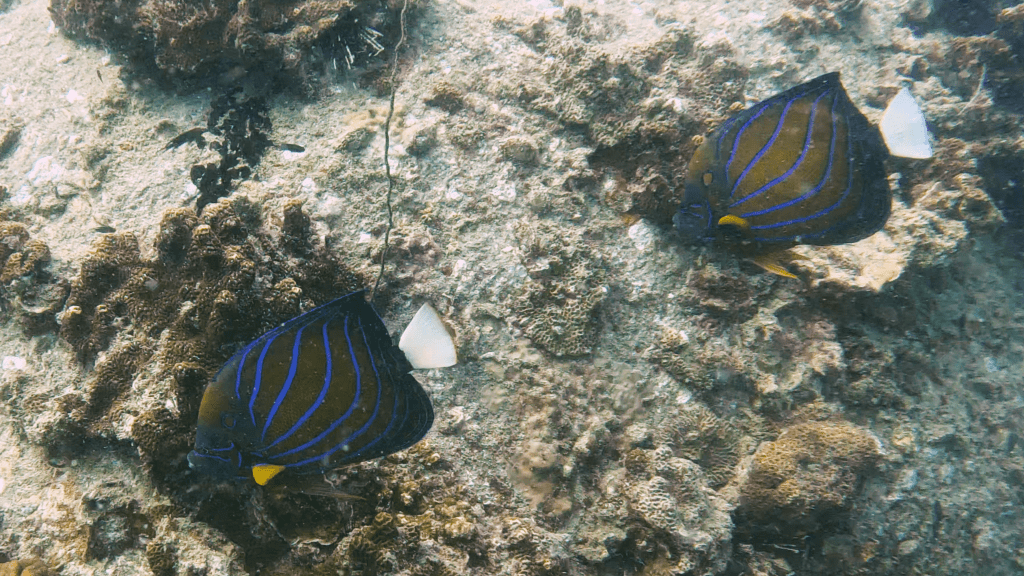Bluering angelfish

The Bluering angelfish (Pomacanthus annularis), also known as the Blue King Angelfish, gets its name from the characteristic blue ring located near its head.
Juvenile fish differ dramatically in appearance from adults. While juveniles have a black body with blue and white vertical stripes, adults have an orange-yellow body adorned with horizontal blue stripes, a yellow tail, and the characteristic blue ring near the head.
Inhabiting the Indo-West Pacific, their range covers East Africa, throughout Indonesia and New Guinea, New Caledonia, and north to southern Japan. Bluering angelfish prefer coastal rocky coral reefs, occasionally venturing into caves or exploring shipwrecks, typically at depths ranging from 3 to 30 meters.
Often found in pairs like other Pomacanthus species, they form harems where males defend territories and control several females. During courtship, males and females release eggs and sperm. Individuals begin life as females (protogynous hermaphrodites), transforming into males as they mature, a process accompanied by a complete change in coloration from the juvenile to adult stage. Juveniles typically inhabit very shallow waters with rubble or dead coral substrates and short filamentous algae, while adults primarily feed on zooplankton, sponges, filamentous algae, and tunicates.
